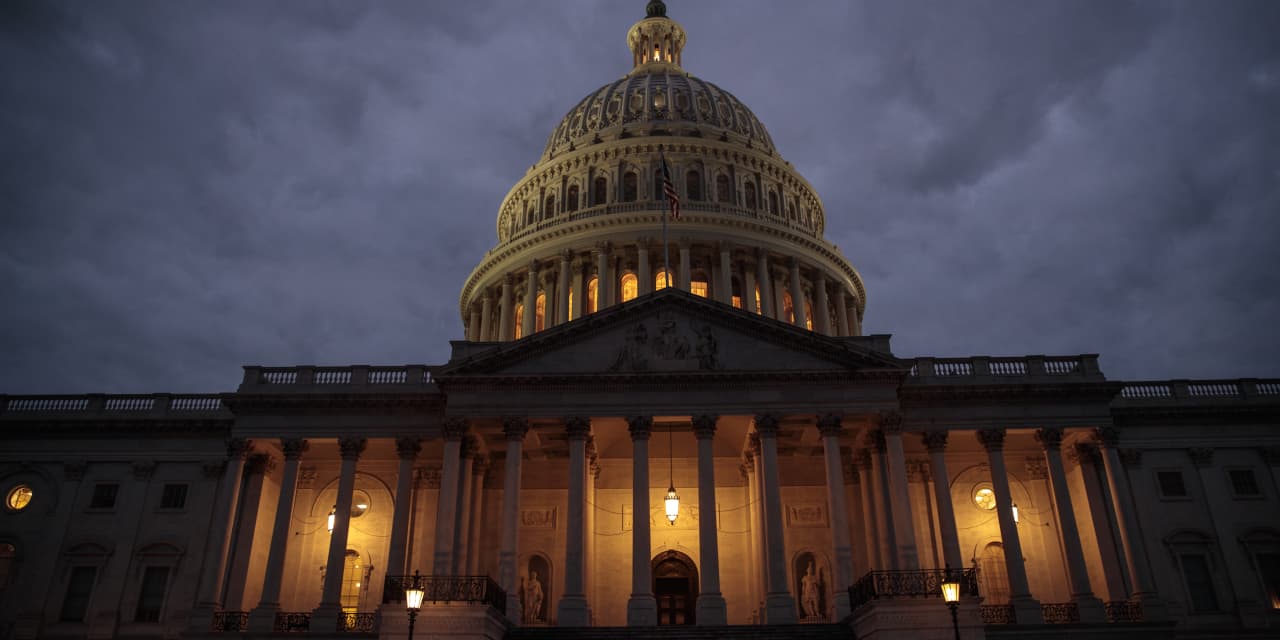The leader of the House has changed, but the likely outcome has stayed the same. After a short honeymoon following the ascension of Rep. Mike Johnson (R., La.) to speaker of the House, Republicans and Democrats appear to be stumbling toward a partial government shutdown this month. As with prior episodes, it isn’t a reason to give up on stocks.
If Congress doesn’t pass spending bills by Jan. 19, federal agencies including the departments of Energy, Housing and Urban Development and Veterans Affairs will at least partially shut down. If the stalemate lasts until Feb. 2, which happens to be Groundhog Day, the rest of the government closes. With the House and Senate not back in Washington until next week, there won’t be much time.
In past episodes, such as last year, the House and Senate passed short-term “continuing resolutions” that keep government funding at prior levels. While such an outcome is still possible, Johnson has said he would oppose a short-term bill in favor of one that funds the government at least through the fiscal year.
Complicating Johnson’s mission is the fact that Republicans themselves are divided over what to do, says Beacon Policy Advisors managing partner Stephen Myrow. Defense hawks in the party are wary of potential cuts to the military but are countered by fiscal hawks more concerned about deficits. Johnson himself represents a district that includes Barksdale Air Force Base and Fort Johnson.
“While there’s happy talk, I’m not sure how Johnson can deliver on a top-line deal that doesn’t cause a complete revolt” among some members of the party, said Myrow.
A governmentwide shutdown, as in the past, would furlough hundreds of thousands of federal workers, while others in essential functions would work without pay.
Before prior shutdown deadlines, the leaders of agencies like the Securities and Exchange Commission said their contingency plans called for skeletal staffs. For example, SEC Chair Gary Gensler last September told lawmakers that the agency could continue to monitor markets but would halt less time-sensitive functions, like rule-making or approving initial public offerings.
Lawmakers seeking deep funding cuts could have even greater leverage if they wait to strike a permanent deal until the spring. The law that suspended the debt limit last year included a provision for an across-the-board, 1% spending cut after April 30 if the government is still operating under a continuing resolution in 2024.
“At this point it appears that the chances are better than 50/50 that there will be at least a partial government shutdown in the coming weeks,” wrote Fundstrat Washington Policy Analyst Thomas Block in a note this week.
Even with a shutdown looking increasingly likely, investors shouldn’t panic.
For one, the macroeconomic impact of shutdowns tends to be limited and temporary. The Congressional Budget Office estimated that the partial government shutdown that ended in January 2019 reduced real GDP in the quarter by 0.2%, which was mostly made up for in later quarters.
Shutdowns do have the potential to disrupt economic data collection, like the monthly jobs report, which could leave the Federal Reserve with little information to go on as it tries to orchestrate a soft landing in the economy. Some surveys have also shown that shutdowns can ding consumer sentiment and reduce spending.
But even with all that taken into account, leaving the stock market if a shutdown occurs would be a mistake. Since the 1970s, while stocks have dropped 10% on average from their three-month high before a government closure, they have rebounded 18% on average over the 12 months after a shutdown ends, according to RBC Capital Markets.
A government closure could be a headache, but isn’t reason to panic.
Write to Joe Light at [email protected]
Read the full article here




